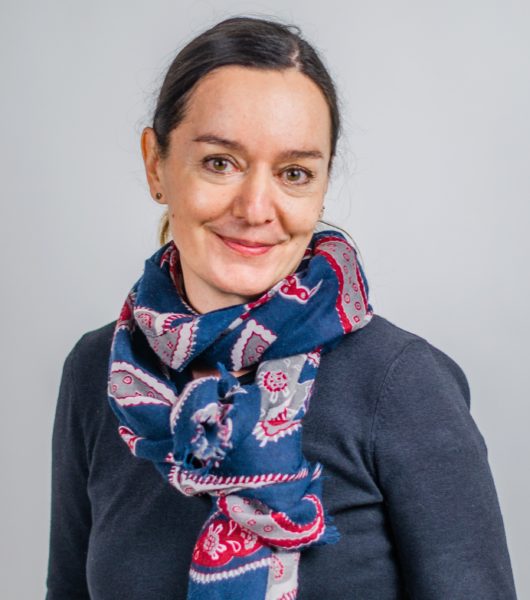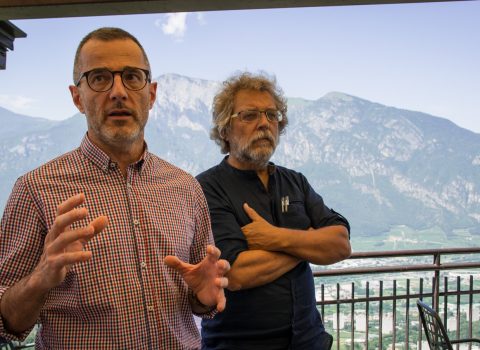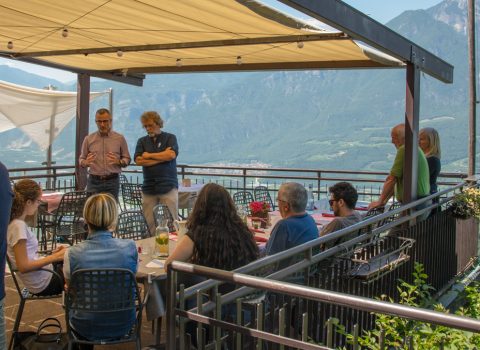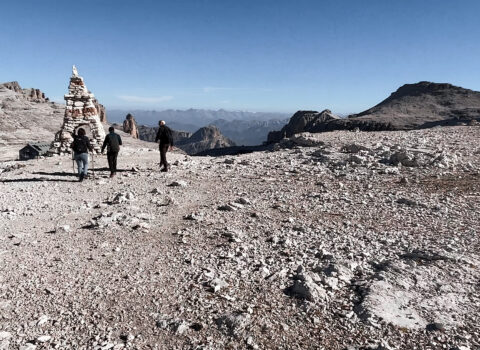
With PIZ-Gamma, scientific research and innovative education meet at high altitude
The project brought more than 150 students from Trentino to the heart of gamma-ray research
On December 5, 2024, the final plenary of the “PIZ-Gamma” project, a unique initiative that brought more than 150 students from seven high schools in Trentino, Italy, to the heart of gamma-ray research, was held at Muse in Trento. With PIZ-Gamma, Fondazione Bruno Kessler in collaboration with the National Institute of Astrophysics (INAF/OAS in Bologna), the Tridentine Mountaineers Society SAT, Meteotrentino and MUSE, involved schools in an educational project to study local gamma-ray bursts (TGFs), atmospheric phenomena associated with lightning in the upper atmosphere. The physical mechanisms of these emissions are not yet fully understood, and there is strong interest in understanding their effects on humans and electronic instrumentation during air travel. The PIZ-Gamma project is named after the “PIZ-Boè” mountain lodge as the final location for the instrument built, and “Gamma,” the first part of the name of the ASI-funded “Gamma-Flash” project from which PIZ-Gamma is inspired.
Gamma radiation emissions are detected with instruments developed by INAF and FBK and replicated in this project by schools. In order to increase the probability of detecting gamma rays, it is important to have the detectors as close as possible to the points where lightning strikes occur, which is why the instrumentation will be brought during 2025 to the Boè mountain lodge (2873 meters above sea level), where it will also be integrated with sensors for collecting meteorological data.
The initiative, based on the DomoSens educational model and funded by the CARITRO Foundation, aimed to bring young people closer to the professions of the future through a multidisciplinary approach that integrates science, technology and collaboration between schools and research institutions. Several research units from Fondazione Bruno Kessler took part in the project: Custom Radiation Sensors – CRS, Data Science for Industry and Physics – DSIP, Micro Nano Facility – MNF, and the Scholars and PhD Program unit.
“Through this project, the classes had the opportunity to experience a hands-on and innovative learning environment, which enabled them to achieve awareness on frontier research topics. We believe that projects like PIZ-Gamma are important for the orientation of students, helping them outline their future academic and professional paths,” Claudia Dolci, FBK Scholars and PhD Program Unit Head, said.
“In the PiZ-Gamma project, students were involved in a technological development of great relevance and importance to high-energy astrophysics and to FBK. In one of the gamma-ray detectors, silicon sensors (Silicon Photomultipliers SiPMs) designed and manufactured by FBK have replaced the more traditional photomultiplier tubes (PMTs). Silicon sensors are more compact, lightweight, robust and require lower voltages and power supplies, making them ideal for use in satellite missions and large detectors.”Giancarlo Pepponi from FBK’s Center for Sensors & Devices said.
“Our INAF institute is engaged in innovative and technological projects involving industrial partners and universities, and we strongly believe in the value of involving the younger generation. Involving high school students in astrophysics-related initiatives not only fosters the spread of passion for science, but also allows for fresh and creative feedback. The energy and curiosity of young people enrich the science and technology path, stimulating innovative ideas and helping to create a connection between academia and future generations.” Enrico Virgilli from INAF/OAS, said.
A fruitful educational program
Launched in October 2023, this year´s project has seen the students enthusiastically working on complex issues, designing and implementing sensors, analyzing meteorological data and experimenting with innovative solutions. These activities allowed them to apply their acquired skills in a real-world context, creating a direct link between theory and practice.
During the closing event, they gave a firsthand account of their work, presenting their activities and achievements throughout the year. Through a specially created video, they shared their contribution to the project with classmates from other schools and representatives of the agencies involved, showing not only their scientific progress, but also the enthusiasm and passion with which they approached this experience.
Trentino schools in the science of Gamma Rays
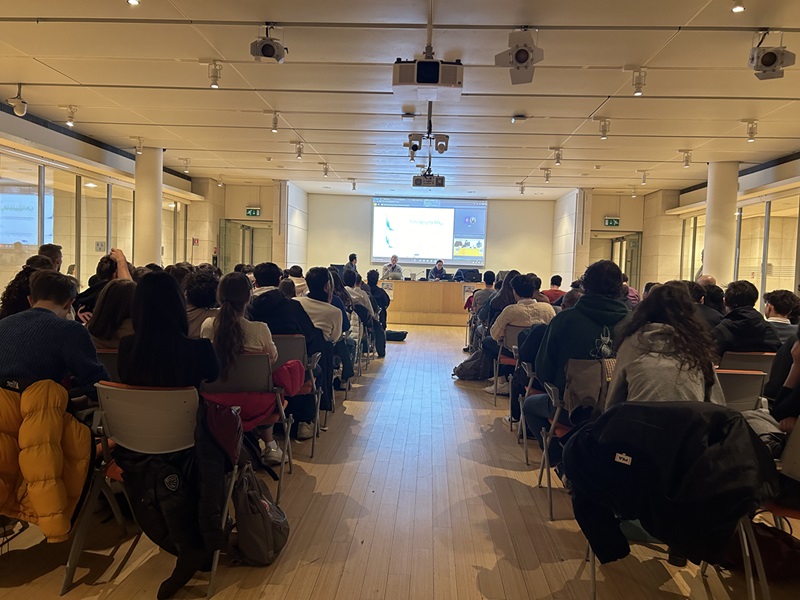
Each institute involved delved into different and complementary aspects, contributing a specific part to the complex PIZ-Gamma science project. The kids involved developed technical projects, theoretical scientific knowledge, and also participated in meetings with researchers from the research institutions involved and took part in meetings that encouraged the sharing of ideas and results. This course offered a unique educational experience, integrating theoretical learning with practical and collaborative activities, enriched by the guidance of school mentors and experts in the field.
During the closing event, the students had the opportunity to present their work, recounting the activities carried out and illustrating the results achieved through videos made by them. Rovereto’s Polo Veronesi focused on the design and implementation of the sensor enclosure, a key element for the protection and operation of the monitoring station. Liceo scientifico Galilei in Trento, meanwhile, explored in depth the phenomenon of Terrestrial Gamma-ray Flashes (TGF), analyzing the nature of gamma rays and their impact on technology and security. At the Liceo scientifico Curie high school in Pergine, students engaged in the analysis of meteorological data, developing skills in processing and comparing results.
Trento’s Istituto Tecnico Tecnologico Buonarroti carried out advanced technical work, assembling and testing scintillation detectors with photomultiplier tubes (PMTs), that are key instruments for the detection of high-energy particles. The team from Istituto Tecnico Tecnologico Marconi in Rovereto designed devices for studying lightning, focusing on how to improve the detection of these complex atmospheric phenomena.
Istituto Istruzione Superiore Alcide Degasperi in Borgo Valsugana also made a significant contribution, conducting experiments with SiPM sensors, capable of detecting light pulses and used as part of scintillation detectors for gamma rays. Finally, the Lorenzo Guetti Institute of Education in Tione addressed a topic of great practical relevance, studying mountain safety during thunderstorm events and delving into behaviors to minimize the risks associated with lightning.


